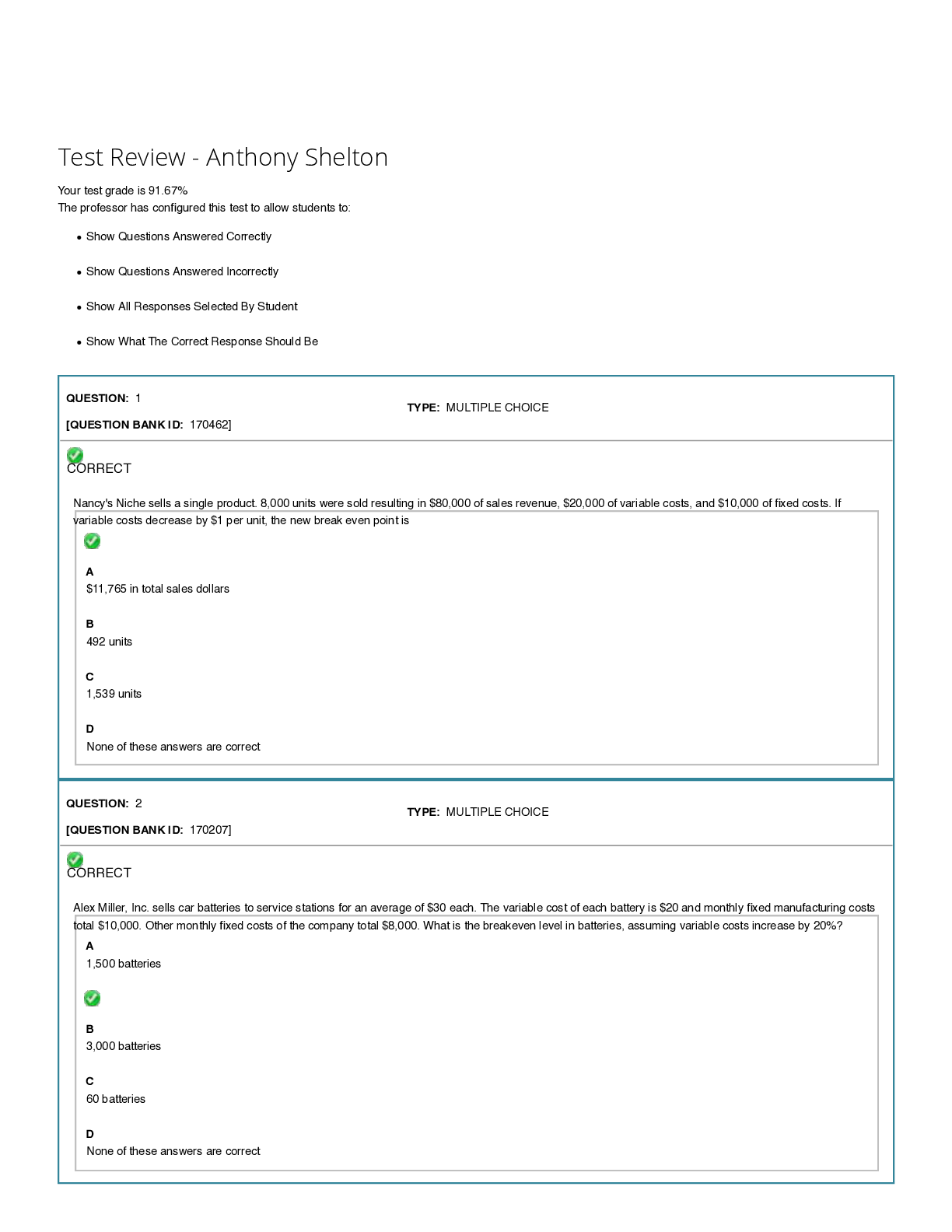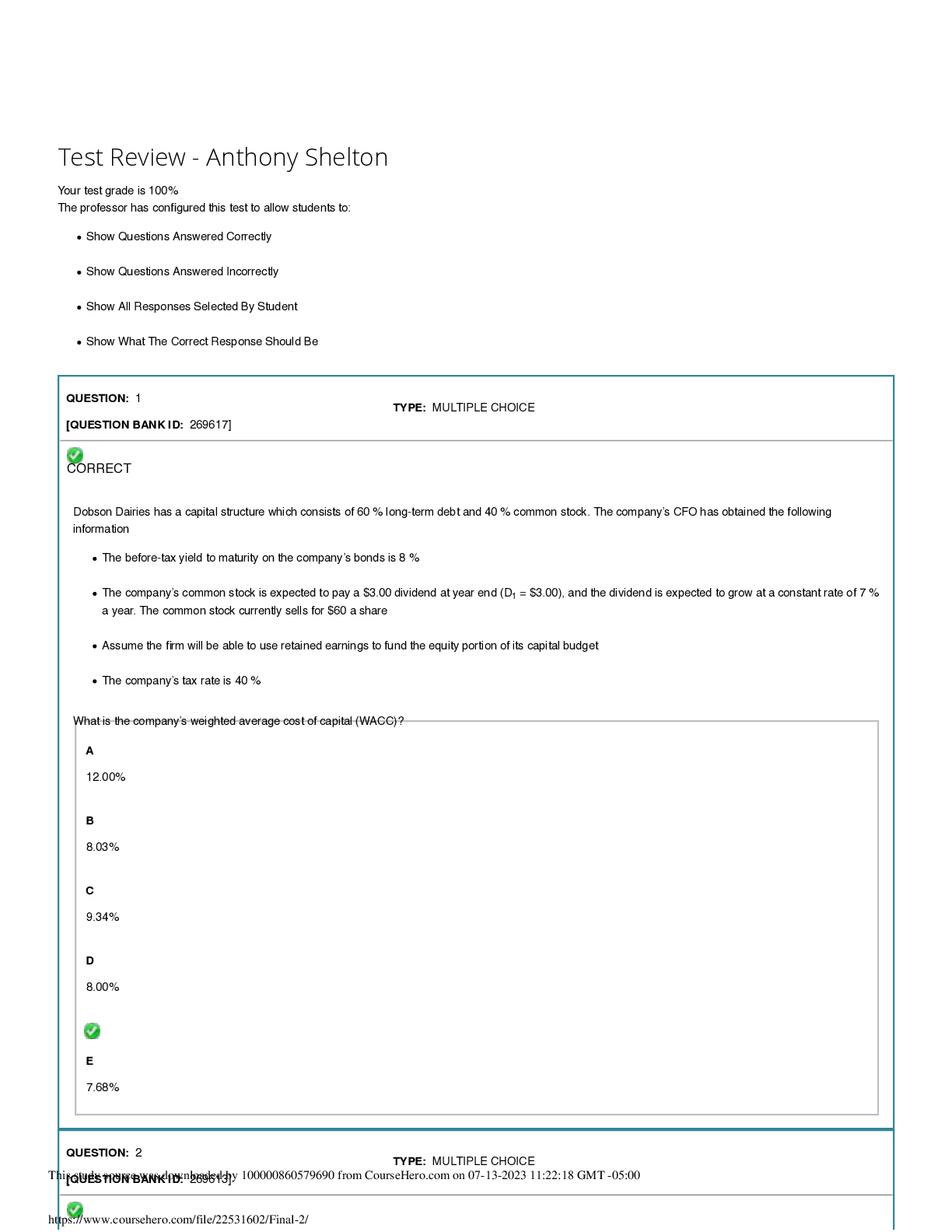IV Therapy Exam 2, Questions & Answers. Rated A
Document Content and Description Below
IV Therapy Exam 2, Questions & Answers. Rated A, A nurse is preparing to administer 5% dextrose and .045% sodium chloride at 100 mL/hr to a client using a volumetric pump. Which essential item should ... the nurse use when operating a volumetric pump? a. A 170-μm filter b. A 0.22-μm filter c. Microdrip tubing d. Special cassette (cartridge) tubing - d. Special cassette (cartridge) tubing A nurse is obtaining IV access for the purpose of administering an IV antibiotic. Which peripheral vein would be most appropriate for administration of anti-infective therapy? a. Hand vein b. Digital vein c. Cephalic vein 4 to 5 inches from wrist d. Median antecubital vein - c. Cephalic vein 4 to 5 inches from wrist A nurse is caring for a client who is scheduled to receive a PICC. Which complications are most often associated with the insertion of a PICC? a. Phlebitis, infection, and air embolism b. Bleeding, thrombosis, and infection c. Bleeding, catheter malposition, and cardiac arrhythmias d. Catheter embolism, infection, and Twiddler's syndrome - c. Bleeding, catheter malposition, and cardiac arrhythmias A committee is asked to investigate ways to reduce needlestick injuries in a hospital. Which technology best assists in the reduction of needlestick injuries? a. Luer locks b. Elastomeric pumps c. Needleless systems d. Three-way stopcocks - c. Needleless systems A nurse is caring for a client with a central line. The client is febrile, shivering, and hypotensive. The nurse suspects that the client may have an infection and orders a blood culture. Which organism is responsible for most cases of catheter-related bloodstream infections? a. Enterococcus b. Escherichia coli c. Coagulase-negative staphylococci d. Pseudomonas - c. Coagulase-negative staphylococci A nurse educator, who is teaching a group of nursing students, describes a long-term catheter that is surgically inserted through an incision in the deltopectoral groove terminating near the right atrium. To which type of catheter is the educator referring? a. Midline catheter b. Implanted port c. Central venous tunneled catheters d. Peripherally inserted central catheters (PICCs) - c. Central venous tunneled catheters Which of the following features of positive-pressure pumps according to Infusion Nurses Society (INS) Standards of Practice should be used to prevent free flowing of the solution. a. Two-pump mechanism assembly b. Dose error reduction systems c. Anti-free-flow alarm d. Use of in-line filter - c. Anti-free-flow alarm An intensive care nurse is caring for a client who is e [Show More]
Last updated: 4 months ago
Preview 1 out of 12 pages
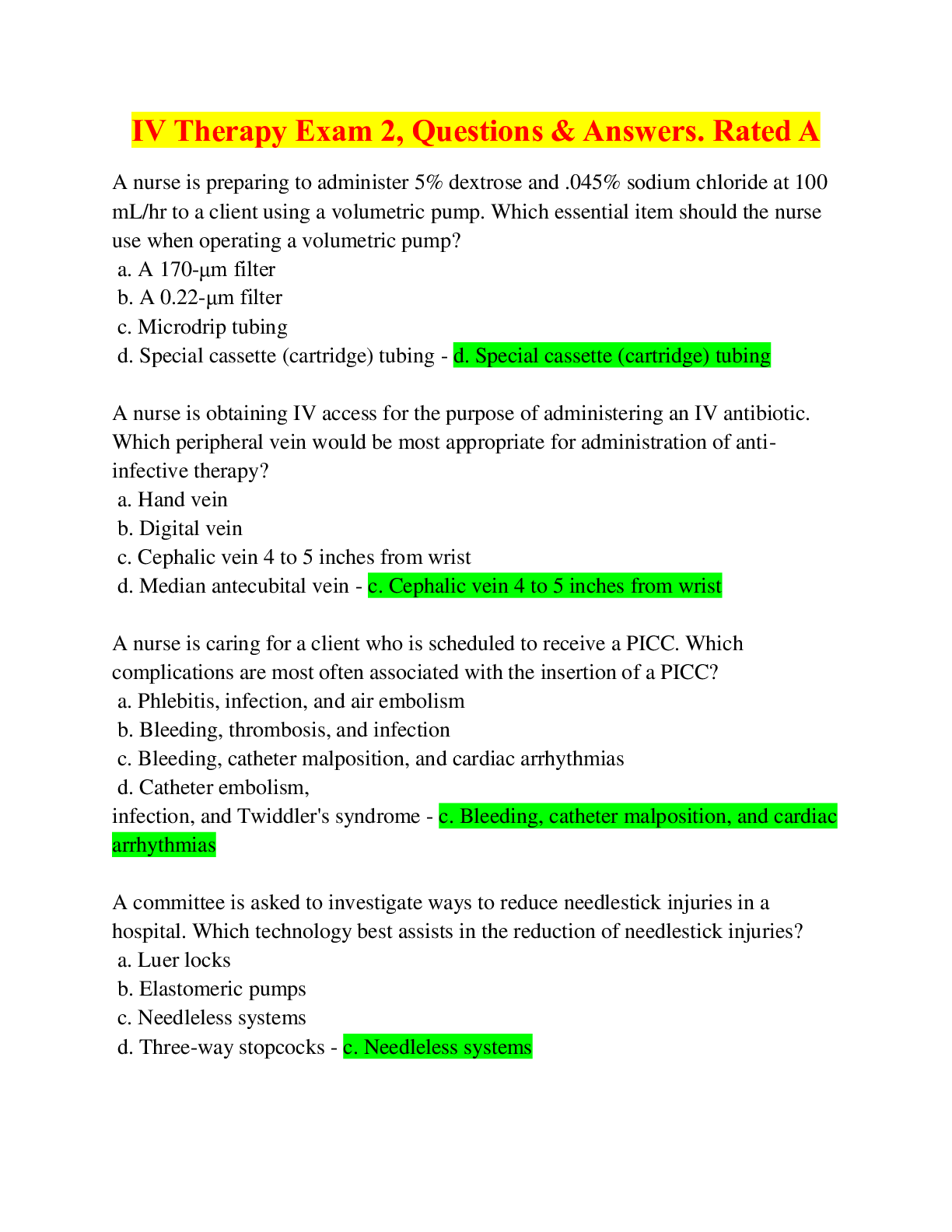
Buy this document to get the full access instantly
Instant Download Access after purchase
Buy NowInstant download
We Accept:

Reviews( 0 )
$12.50
Can't find what you want? Try our AI powered Search
Document information
Connected school, study & course
About the document
Uploaded On
Sep 27, 2023
Number of pages
12
Written in
Additional information
This document has been written for:
Uploaded
Sep 27, 2023
Downloads
0
Views
137


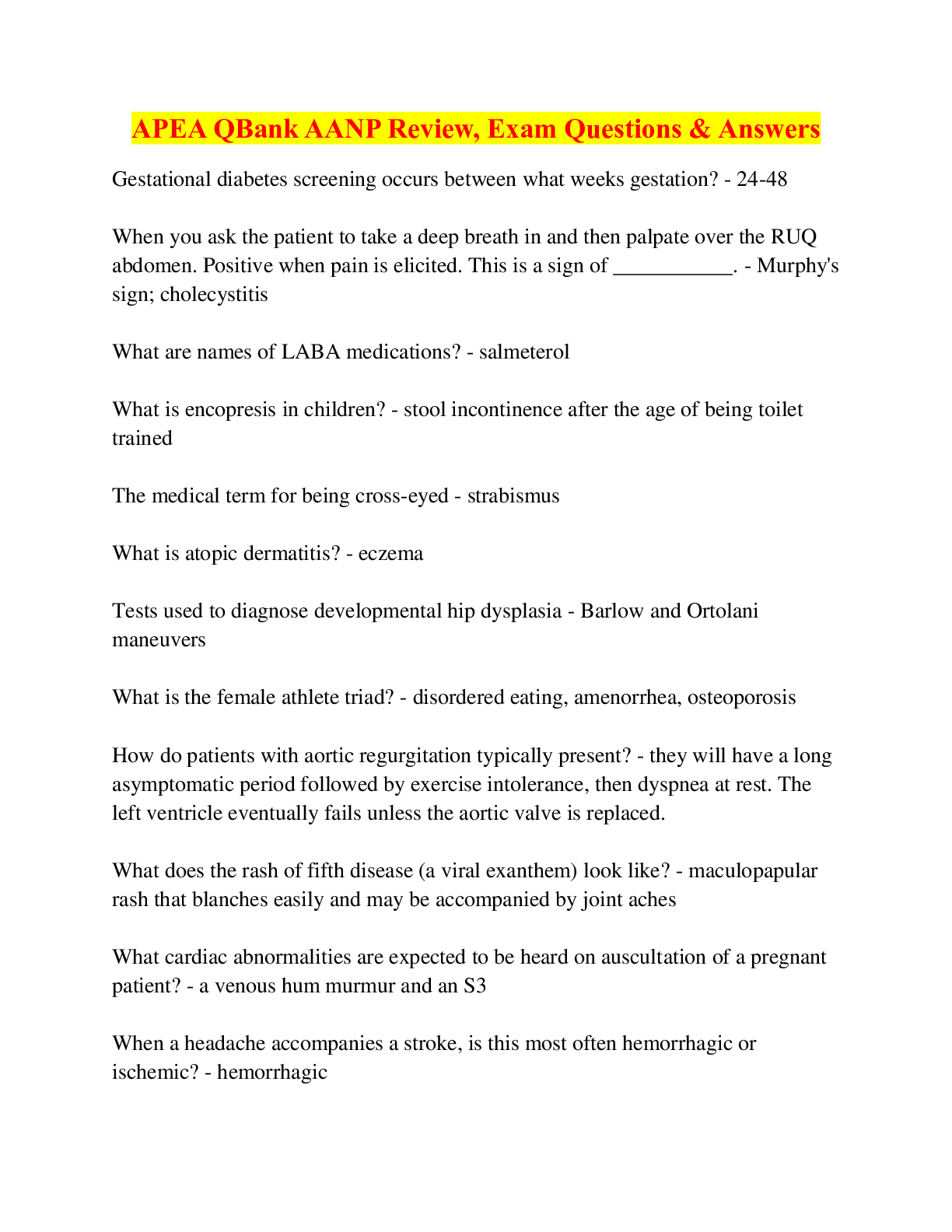
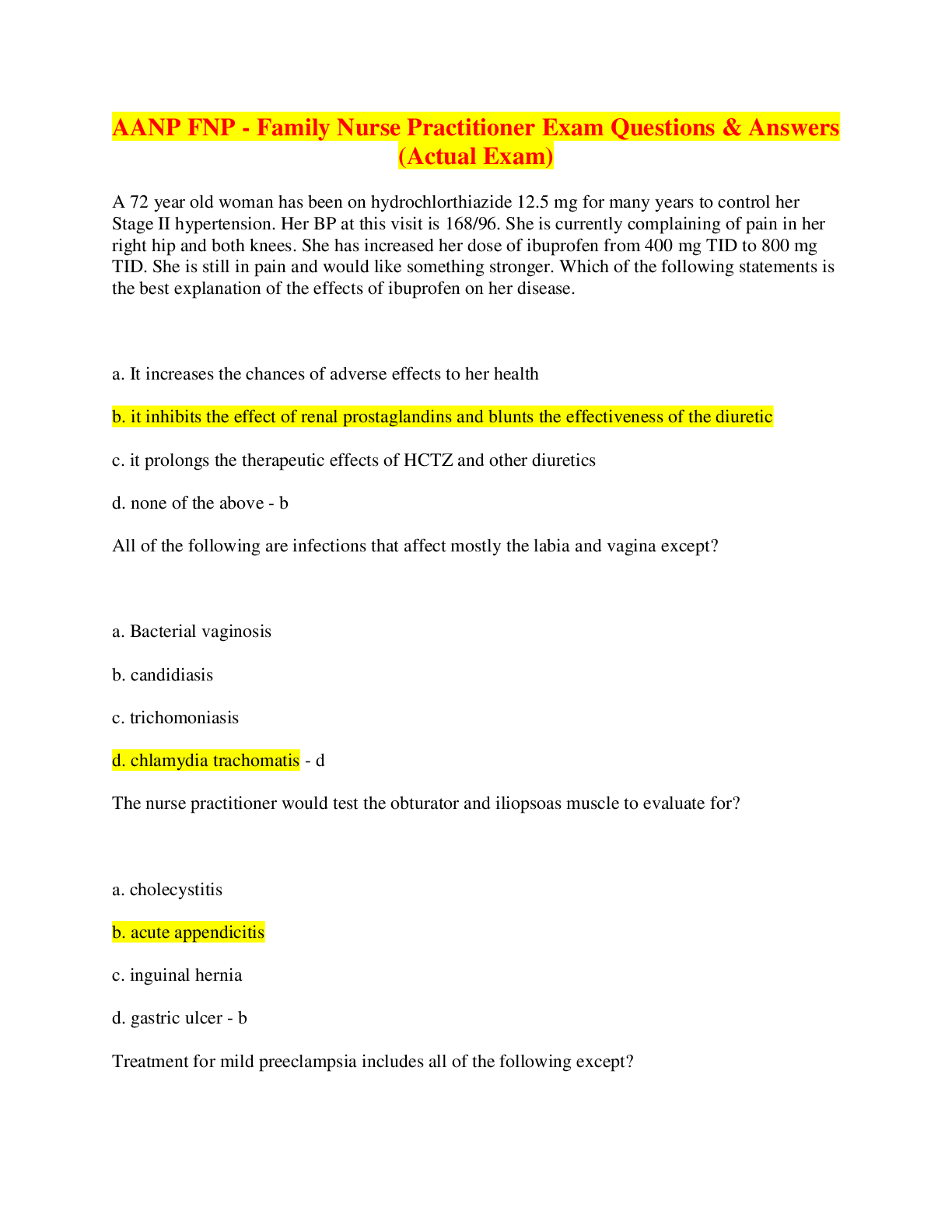


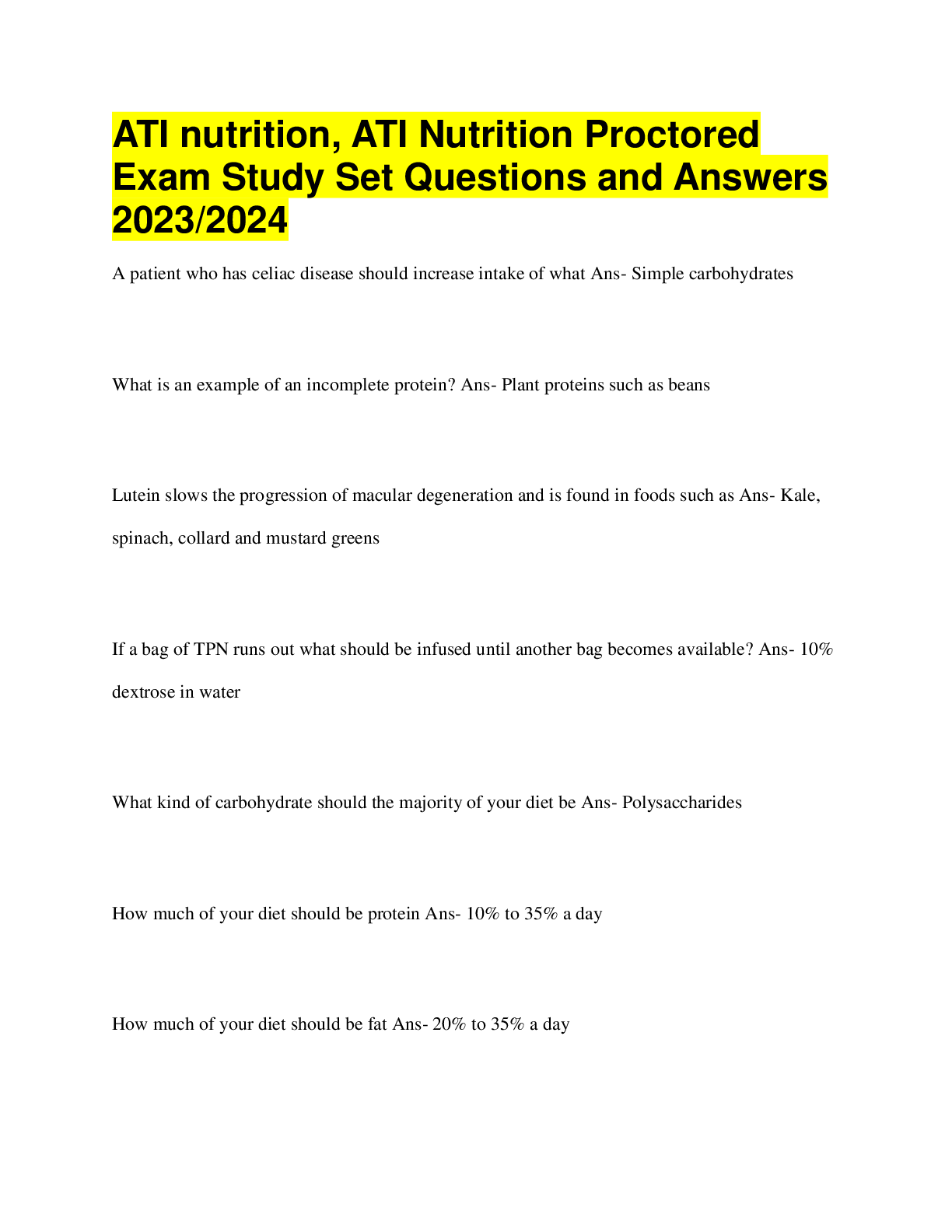
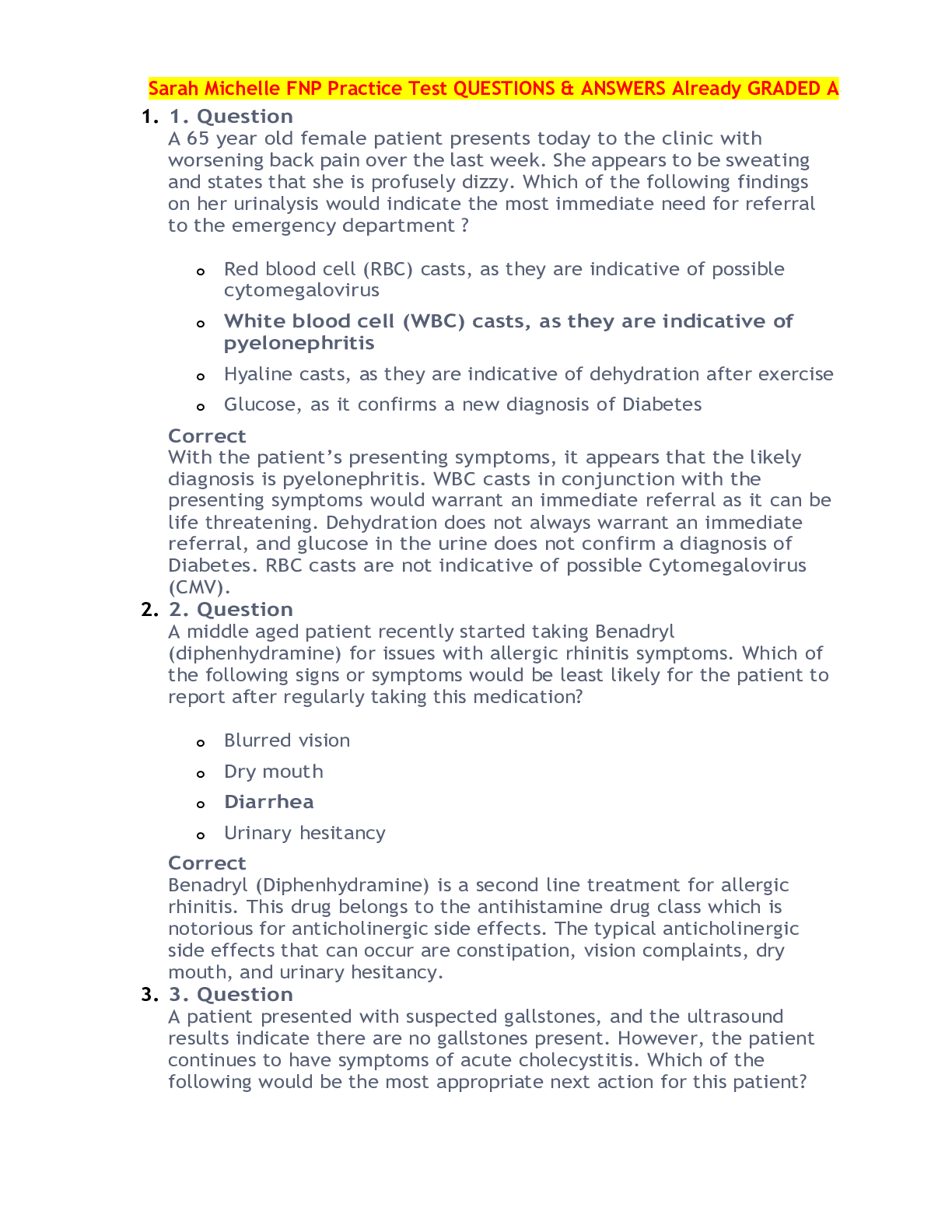
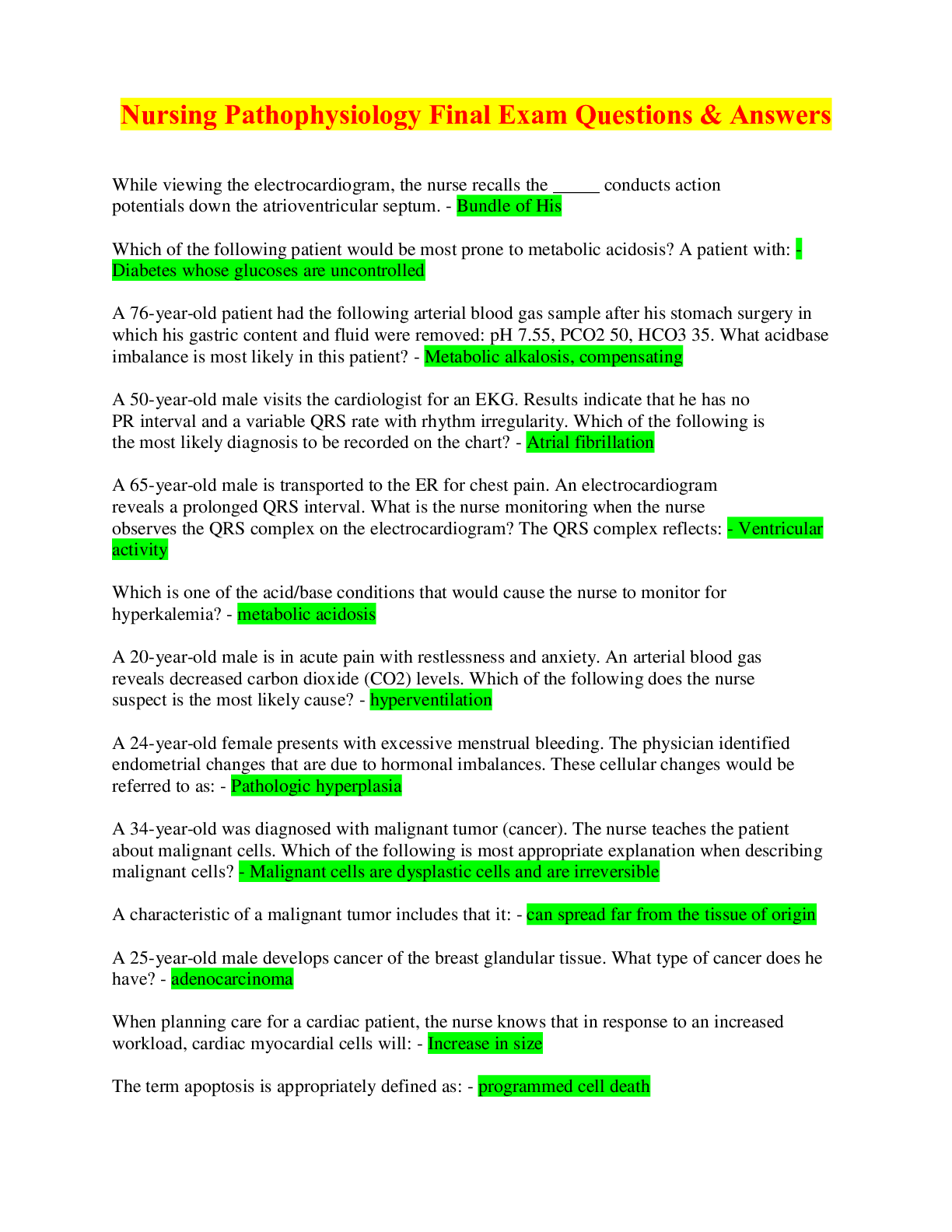
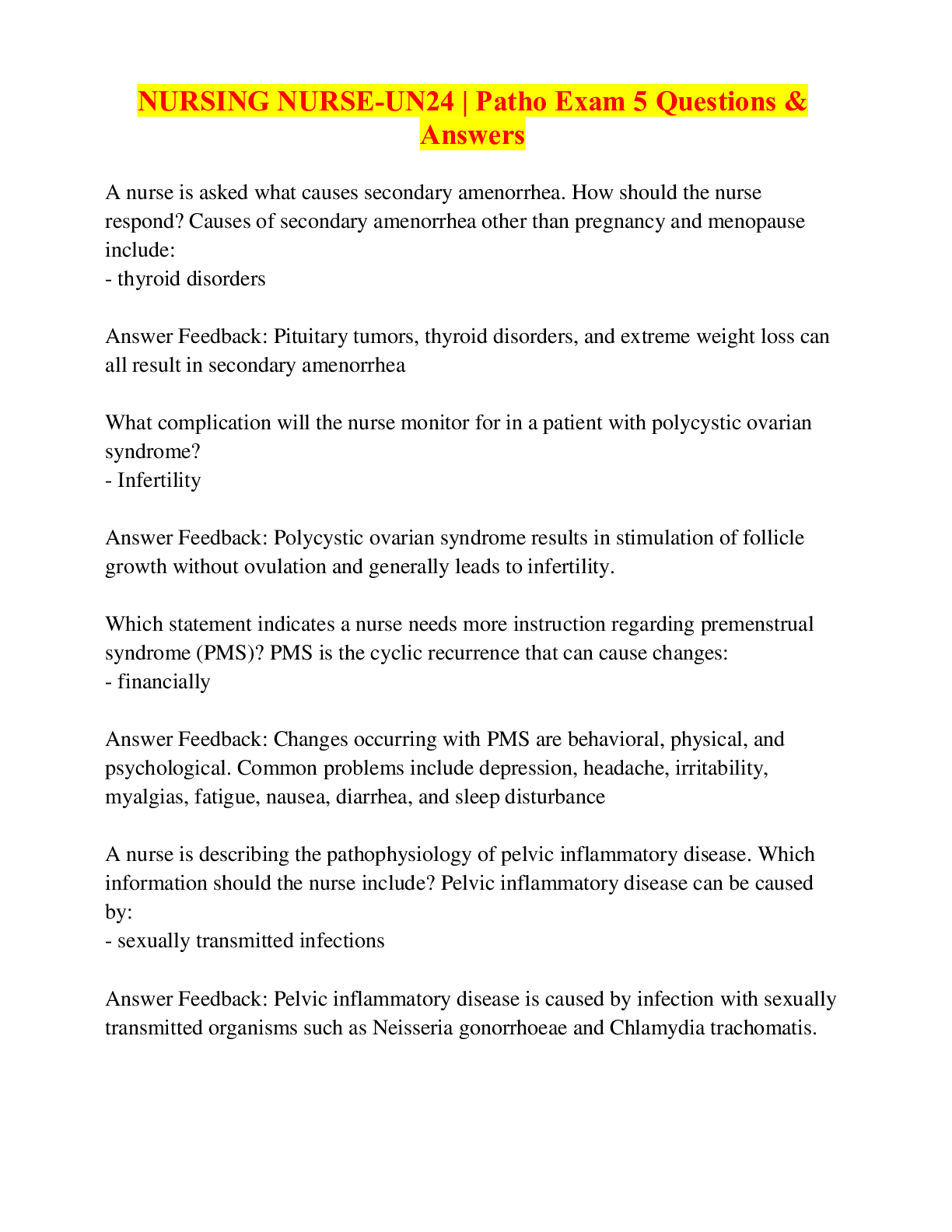

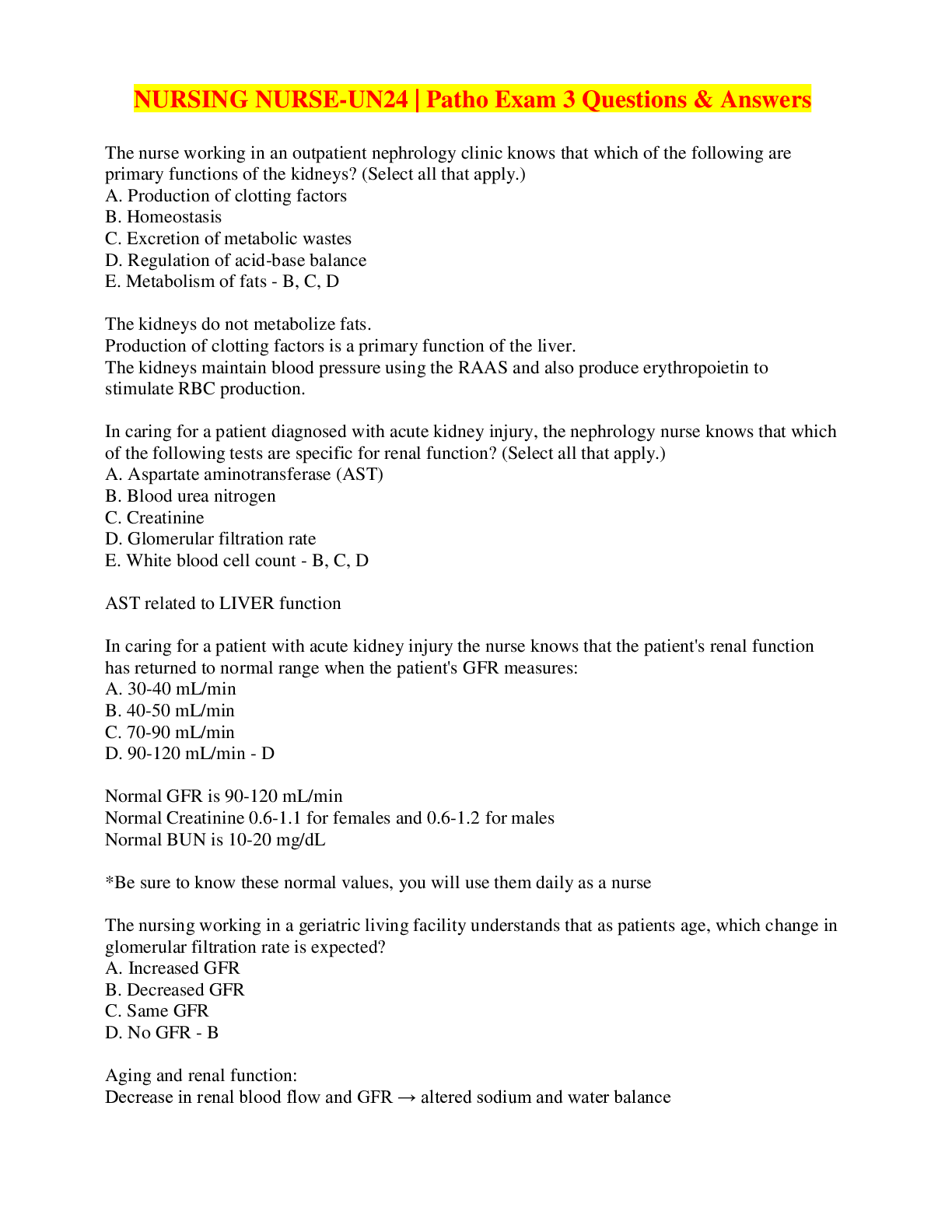
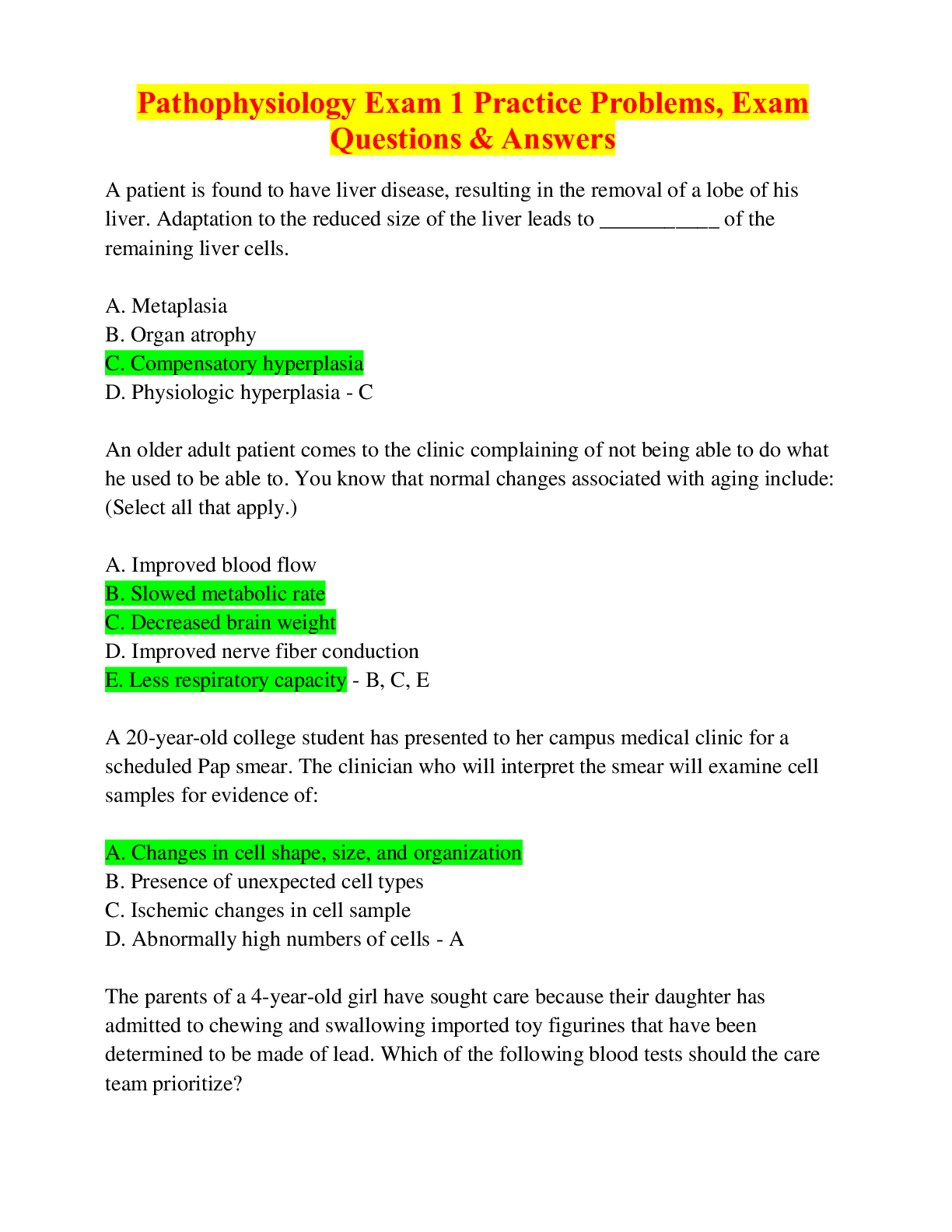
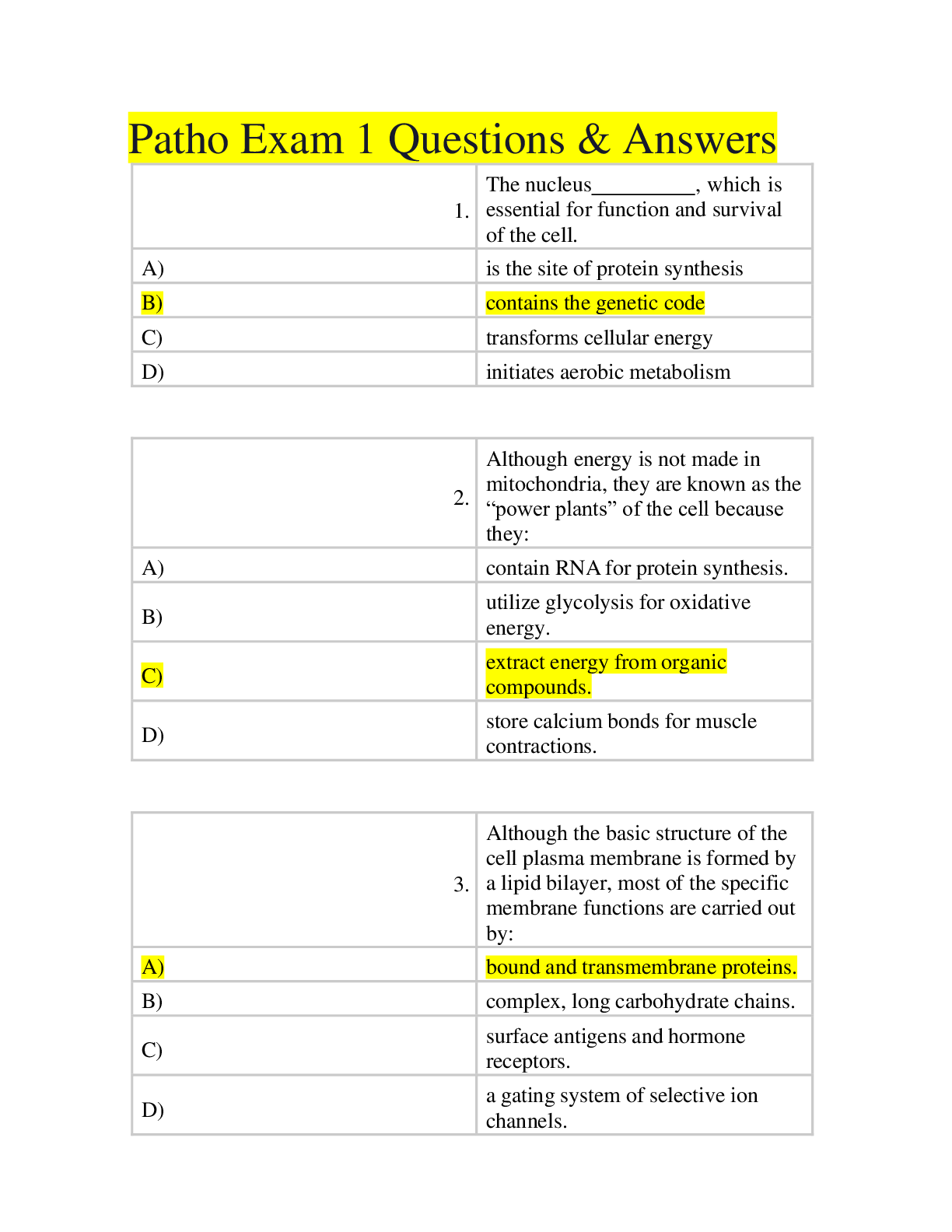



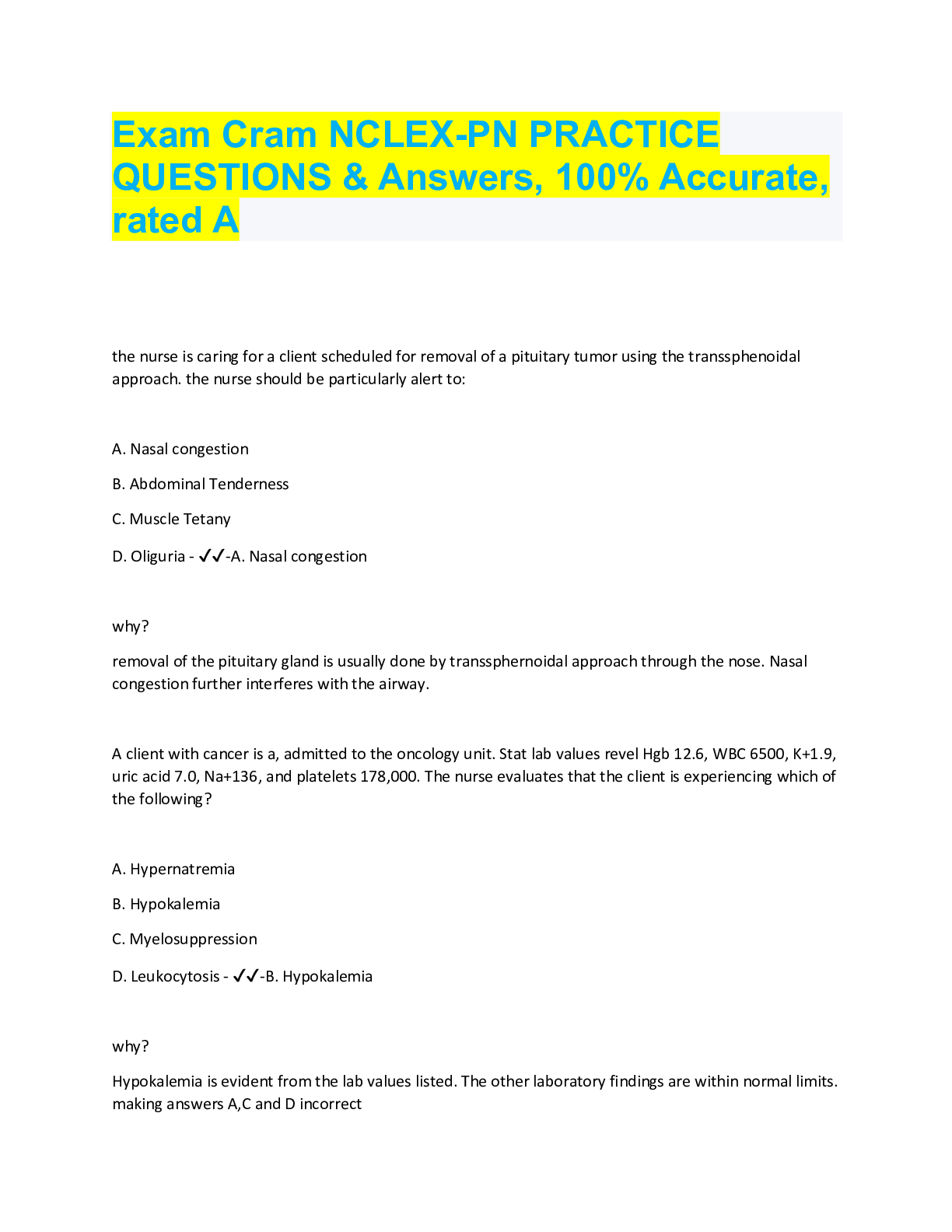
 (1).png)
.png)


